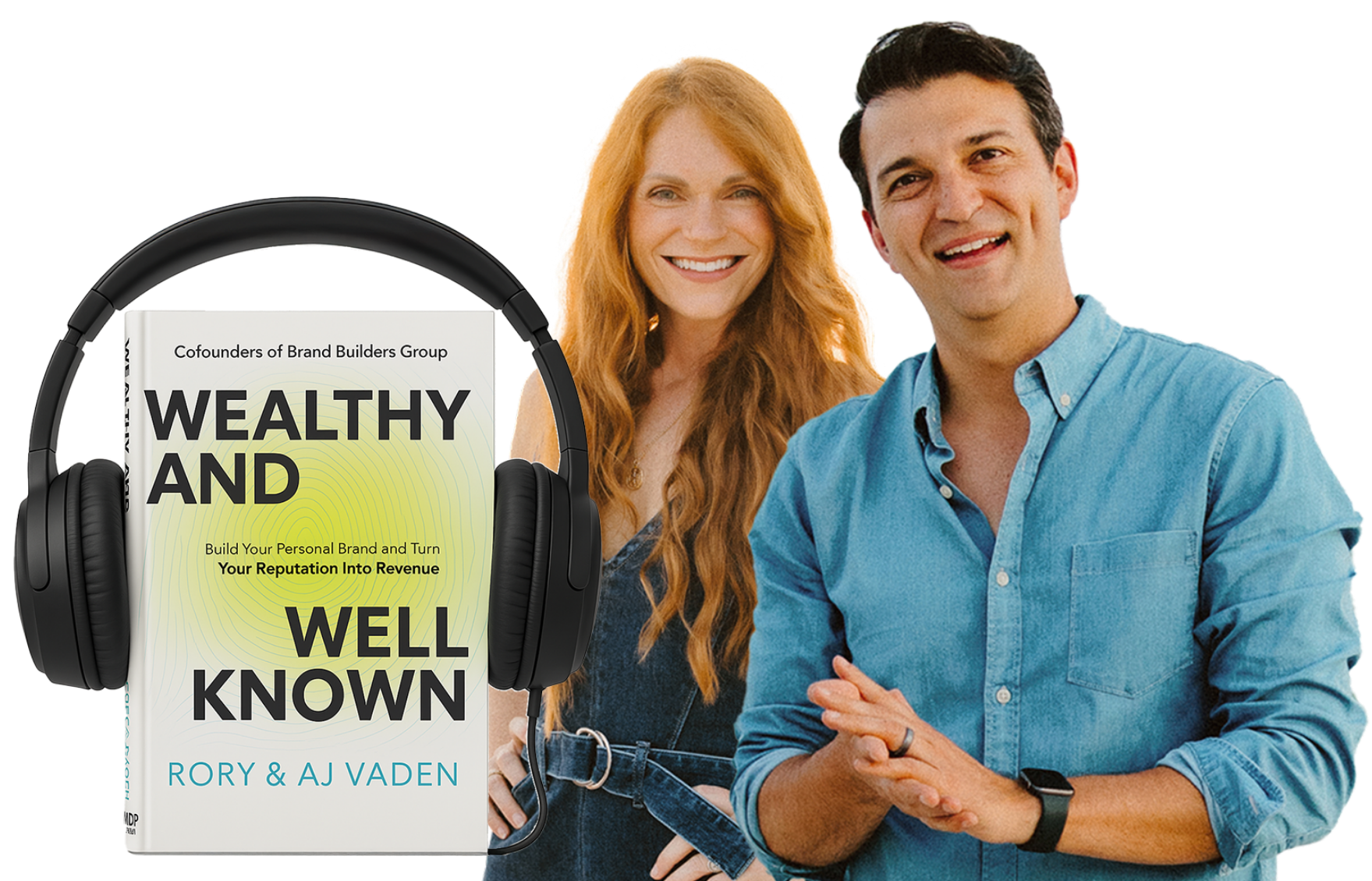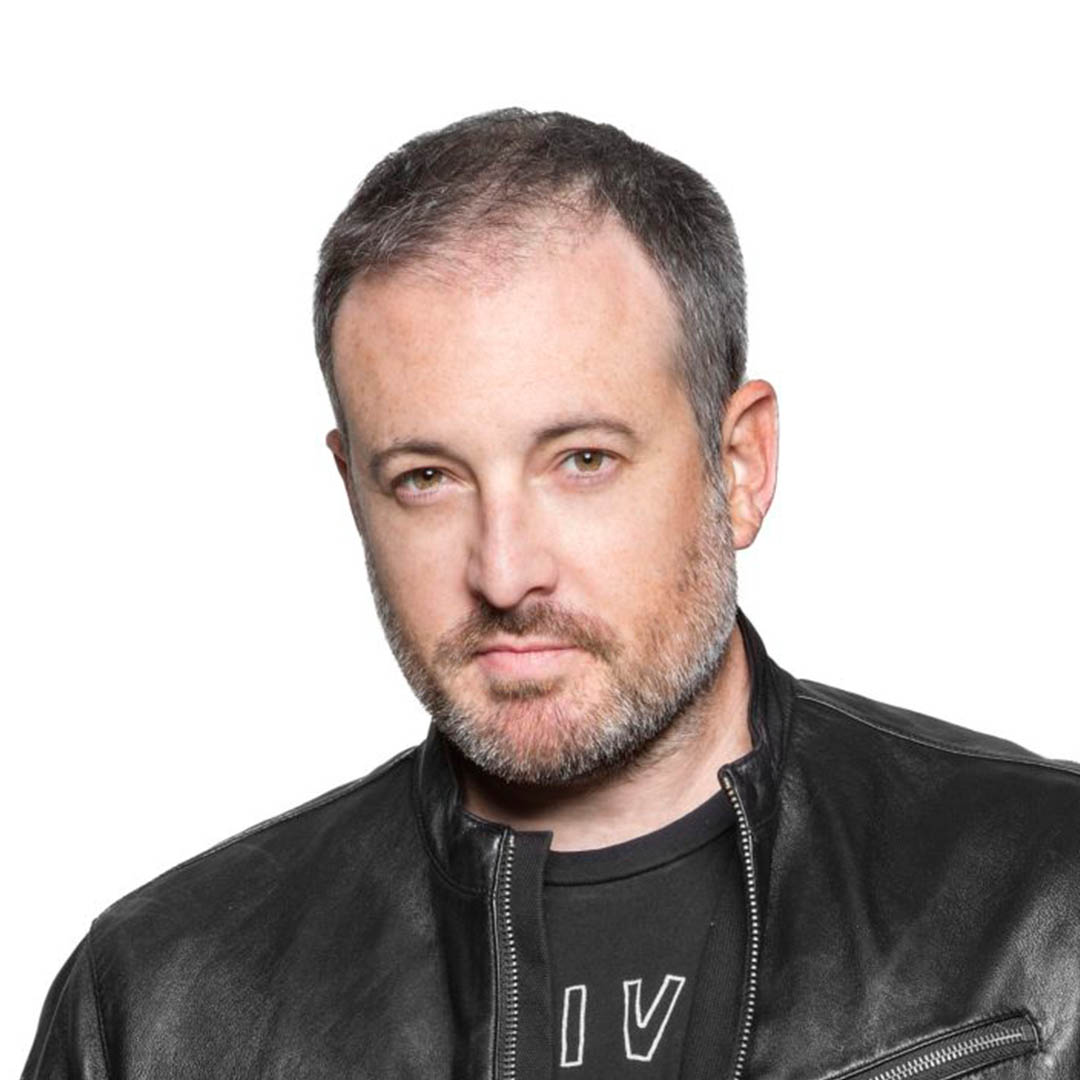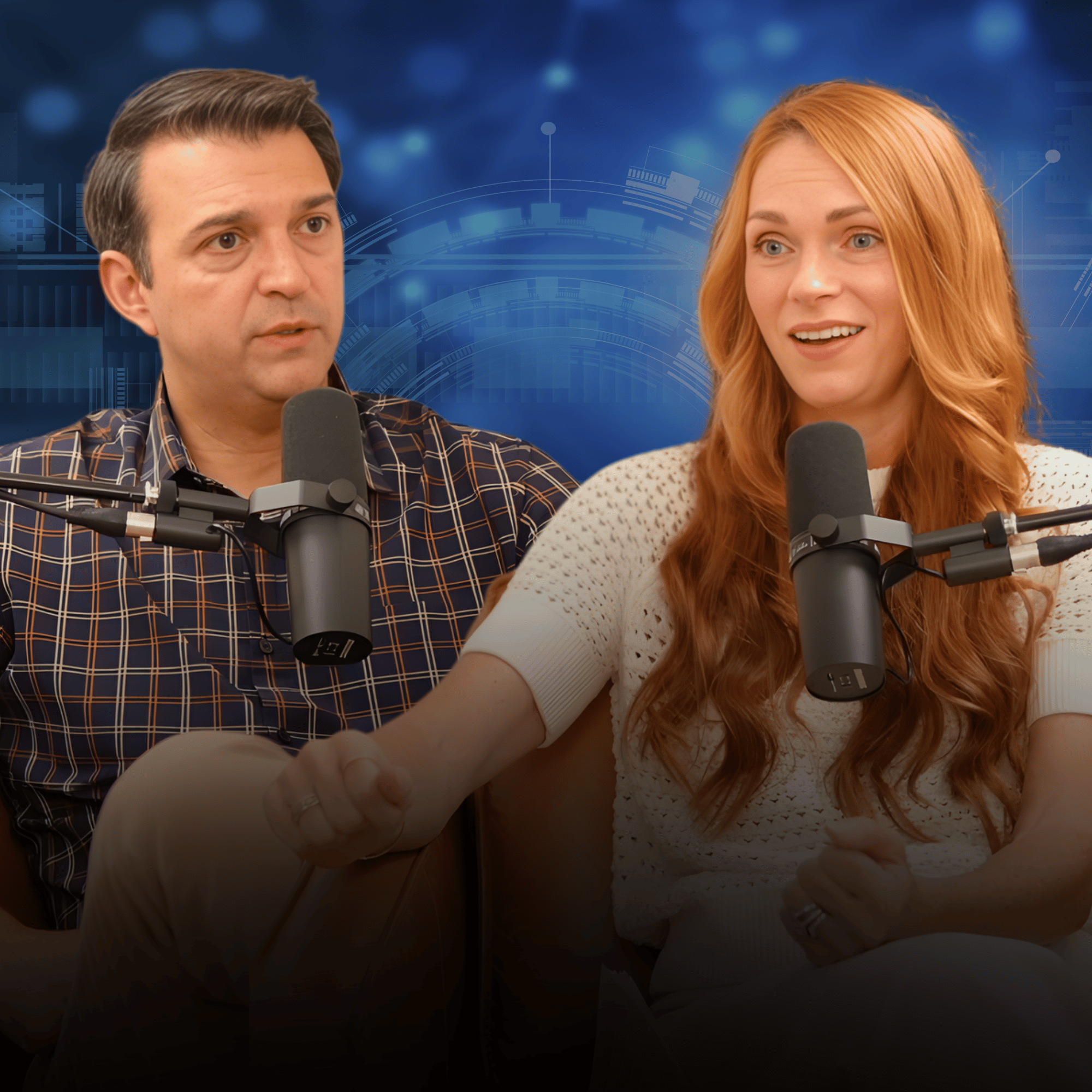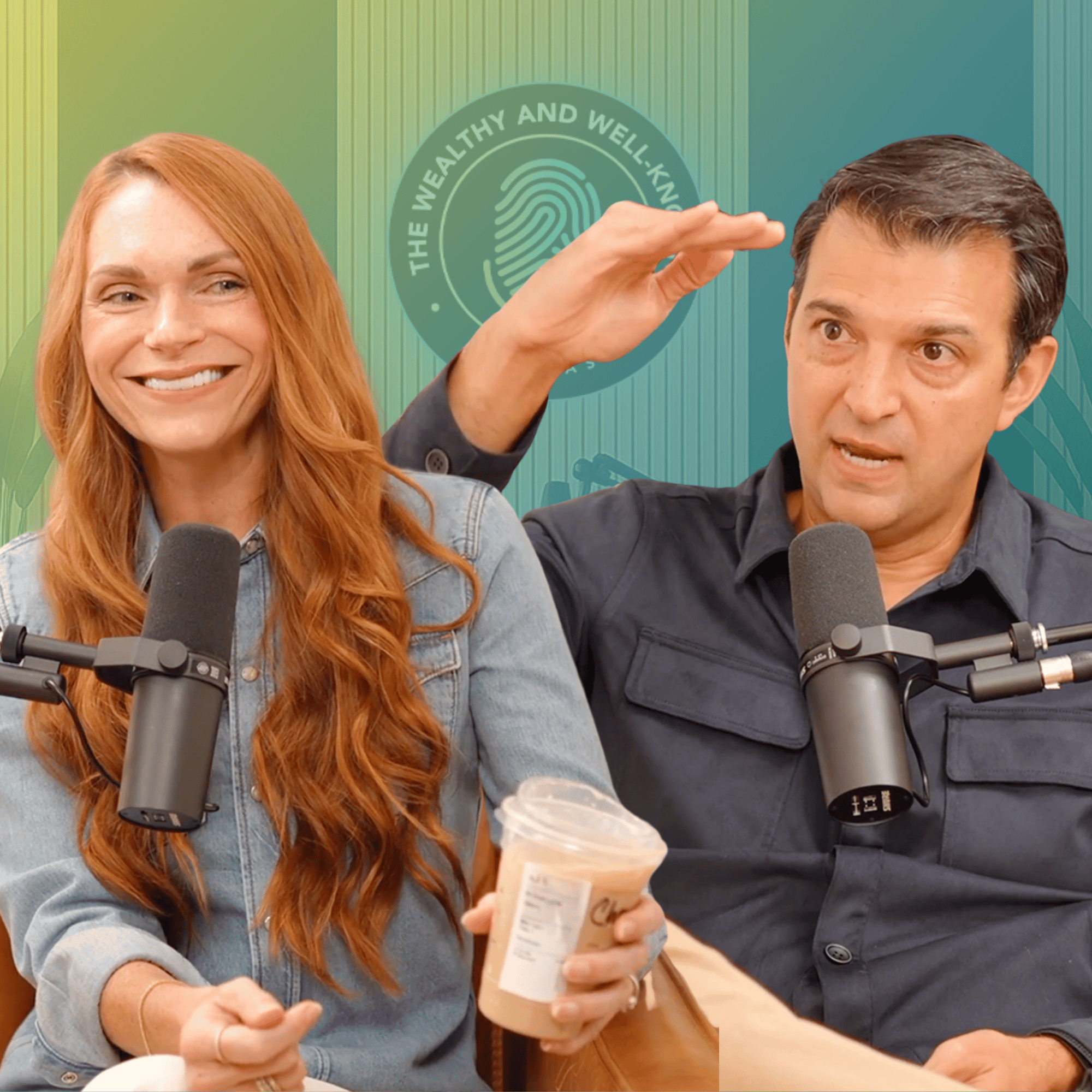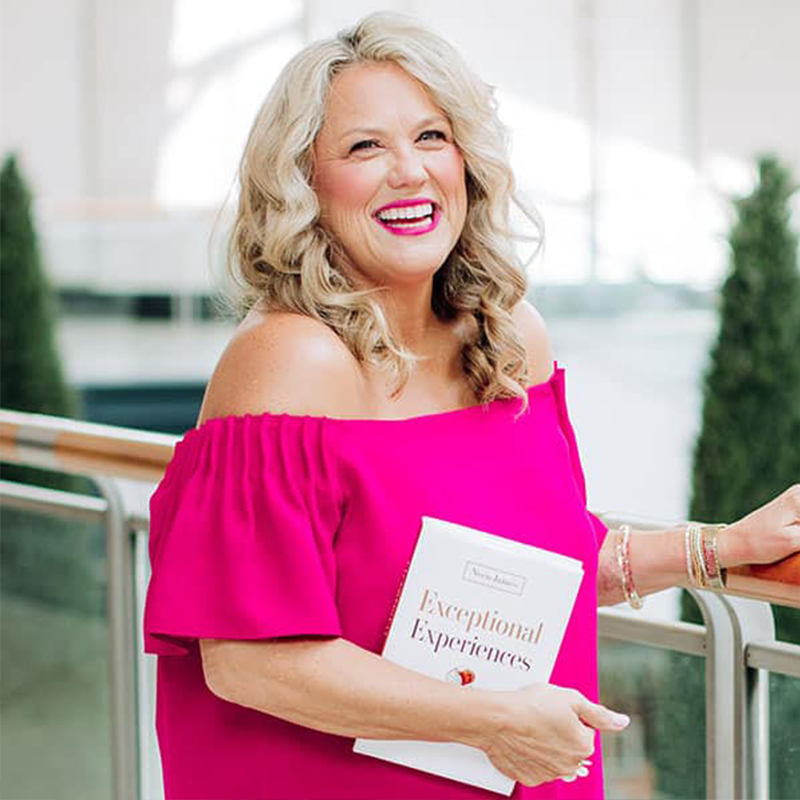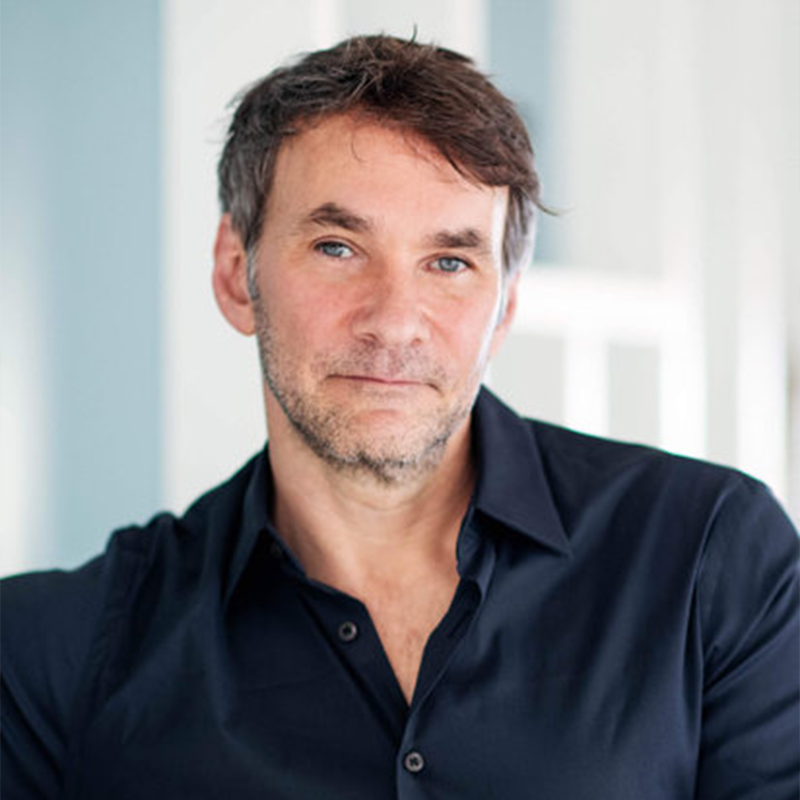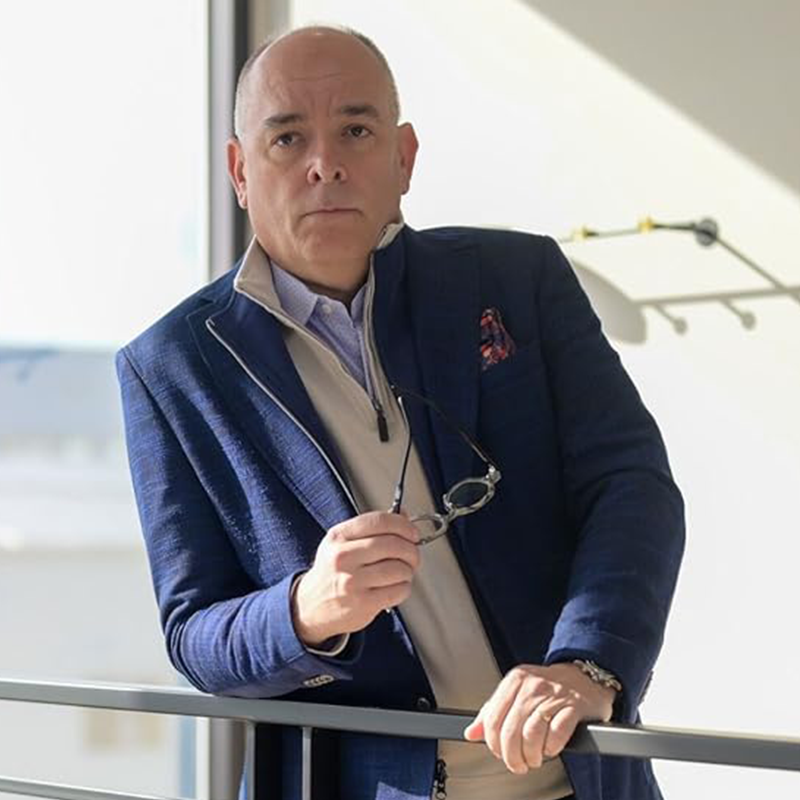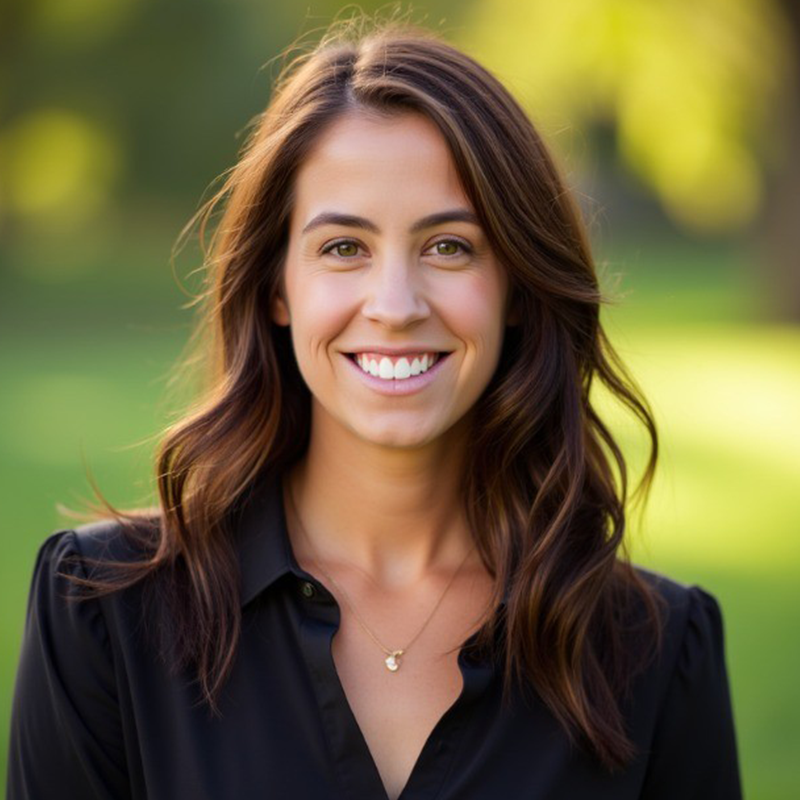RV: (00:00) Hey brand builder, Rory Vaden here. Thank you so much for tuning in to listen to this interview. We are so excited to bring you this information and wanted to let you know that Hey, there’s no sales pitch coming from anything that we do with. This is all our value add to you and the community. However, if you are somebody who is looking for specific strategies on how to build and monetize your personal brand, we would love to talk to you and we offer a free call to everyone that’s interested in getting to know us and is willing to give us a chance to get to know them and share a little bit about what we do. So if you’re interested in taking us up on a free strategy call, you can do that at brand builders, group.com/summit call brand builders group.com/summit call. Hope to talk to you soon on with the show. RV: (01:03) Well, I’m excited to introduce you to somebody that I’ve known about for years, but it’s been some of those like at a distance, at a distance. And then finally we had a close friend that we both share a mutual friend connect us and be like, you two got to know each other. And I have to say as I’ve gotten to know more and more about Mike Dillard and has spent some time really learning about him online and I was, had a chance to be on his show. And I just really, really love this guy and I love what he’s about and I love in many ways the diversity of his knowledge, but also his central thesis thesis of being focused on helping entrepreneurs succeed, which is a story that he has lived several times, which you all know is of highest value and importance to me. RV: (01:48) Somebody teaching what they’ve actually done. And that is who we bring to you. So, as a personal brand though, so he’s had several successful companies and he started in network marketing. He’s done investing, he’s done online marketing all sorts of different membership and kind of training programs. He has a thing called ever grow, which I really, really love. We’ll probably talk about that. But in terms of a personal brand, you know, he’s had over 5 million downloads of his podcasts. His books have sold hundreds of thousands of copies, hundreds of thousands of you know, online followers. And anyways, he’s, he’s gonna [inaudible] tell us how he did all that in 20 minutes. Appreciate it. Yeah, man, I I was so excited. So I wanted to start with the network marketing thing because I started in network marketing. My mom was a network marketing. I was raised by a single mom who sold Mary Kay. And so, now. I consider that, you know, an important part of my journey. And then I got into network marketing. So was it, it was in, you were at Texas a and. M, what was it? What company was a MD: (03:00) One of a dozen. Okay. You did a bunch of them. Well, you know, you, I’m in, I’m in college. It’s 1996 to 2000. So it’s a web 1.0 days where there was no social media. It was crazy to see a video online back then. Yeah. I knew I wanted to be an entrepreneur and really the only option at that time it was network marketing. If you want to start an entrepreneur and start a business and become an entrepreneur for, you know, two or 300 bucks, which is all I could afford as a college student. That was basically the only gig in town. And so that’s where I got my start. Unfortunately, I failed at it miserably for five years. I jumped from business to business to business trying to figure out, figure out what I was doing wrong never succeeded in tell a very smart mentor of mine. MD: (03:44) Finally kind of slap me across the head, if you will, and gave me a piece of advice that changed my life. And he said, Hey man, this hasn’t been working for you for 12 different companies over five years now and do you want to know why? And I said, absolutely. He said, because if you want to get [inaudible], Hey, you’d like a professional like myself. And he was making about 50 grand a month at the time, which for me it was just [inaudible] this massive lifelong goal [inaudible] you have to become a professional. And for me, I hadn’t done that. I just gone from opportunity to opportunity thinking that that’s what was going to allow me to achieve success and make money. And that was a life changing light bulb moment for me where I was like, okay, yeah, everybody who’s walking across the stage and getting a check has mastered a specific skill when it comes to this industry and they are a true professional with that they have value to offer. MD: (04:31) I was like, I don’t have any of that. All I have is an opportunity that 20 other distributors have in the same company. Okay. And so at that point I dove in, forgot about the business and just started honing my craft, which specifically became copywriting and essentially salesmanship in print. I was the worst salesman on the planet. So I needed to figure out how to sell something without actually talking to people. I was super shy at that point in my life. And so I spent about a year and a half reading every book I could on copywriting and ended up learning how to essentially apply attraction marketing to the network marketing industry. I ended up writing a book called magnetic sponsoring that transformed that world. I became a public hero in a public villain overnight. Half the industry loved me and half the industry hated me because I was challenging an old paradigm. Right? Nonetheless, I became one of the biggest personal brands in that industry. I put attraction marketing on the map. I introduced that world to internet marketing and within 18 months I went from waiting tables to making my first million dollars at the age of 27 built a list of, you know, hundreds of thousands of email subscribers that turned into a multiple eight figure company and then left that business about four years later. Wow. Are you well able to share the company or no, it’s called magnetic. Yeah. RV: (05:58) Oh, okay. Yeah, yeah, yeah. Today. So that wasn’t it. It was an education company that served the network marketing or the direct sales like industry. And I taught myself MD: (06:07) How to generate leads and how to sell my business through a sales page and a capture page and emails. I ended up building the largest download in my next company. So I went from zero to the number one residual income or in that business I wrote magnetic sponsoring as the training manual for my team. It kinda got circulated around other groups and they’re like, Hey, can we thr [inaudible]? And I was like, yeah, let me make a generic version of it. So I started selling copies of that online for $39 a piece. And within, you know, two years I was selling $6 million worth of essentially marketing courses to that industry. Mmm. And then had the, the distributor ship and the primary company. And after doing that for about four years, I’d really accomplished everything that I [inaudible] could ever have, possibly imagined in that industry and kind of lost my excitement for it and decided to move on to a new challenge. RV: (07:00) Huh. So that skill set you know, writing copy, yeah. As you described it, basically, you know, selling on paper. Is it still as relevant today as ever or less relevant or MD: (07:16) More? For sure. I mean, you know, if you think about it, everything we do is basically online today. And so we’re, we’re not communicating one-on-one unless it’s a rare occasion like this when it’s live. But 99.9% of our communication is what we’re saying on Instagram or YouTube or a blog or email list. And so copywriting a to me is the language of the internet. And if your business is on the internet and you don’t understand copywriting, then you really don’t know how to talk to anybody in your audience. So if your message is getting ignored, if nobody’s buying your product, if nobody is paying attention to your calls to action, it’s because you have not learned how to communicate effectively through a one to many type of format. And that’s essentially what the skill of copywriting is. RV: (08:00) Interesting. So if you [inaudible], is there something, was there like a big light bulb? Like a, I love what you talked about. If you wanted to be paid like a professional, you need to act like one. Was there a big moment, like you had like that in your copywriting career as well, where it was like a big light bulb that said, Oh my gosh, this is the, this is the key to copywriting that I have missed, know well, over the years of learning this and doing it, MD: (08:26) If I could sum it up into one sentence, the one thing that when I first went down the copyrighting rabbit hole, that was just a massive light bulb and turning point for me. A lot of people have probably heard of this, but it was a quote that says, nobody wants to buy a drill because they want a drill. They buy a drill because they want a hole. And what I had always done is whenever I would try to sell something, I would sell it on, Hey, here’s how cool it is. Here’s the price or the discount or the features RV: (08:56) Or the, you know, whatever it may be. But at the end of the day, nobody’s ever buying your product cause they want that product. They’re buying your product because they want the result that is going to come from that product. And unfortunately, unless you’ve had this kind of training or epiphany, that’s counterintuitive. And so if you want to sell a drill to me, you’re talking about how easy it’s going to make your life, how fast it’s going to drill a hole, how much time it’s going to save you, how it’s going to save you from injury and all of these other things instead of, you know, talking about the drill itself. So that to me was the big was the really big light bulb. Yeah. [inaudible] well I love that. So, so now fast forward to here a little bit into entrepreneurship. So you know, brain builders, we have these phases, you know, phase one, phase two, phase three, phase four and our phase four section we call eight figure entrepreneurs. RV: (09:49) So it’s really about, yeah, phase one is brand identification and figuring out what your brand is all about. Phase two is creating all the assets. Phase three is optimizing and starting to run paid traffic and looking at data, et cetera. And then phase four is really scaling that, that, that brand to a real business, which is one of the things that I feel like you’ve done really well, that a lot of [inaudible] have it. And, and I think you’ve also had some failures along the way. So. Mmm. When you think about scaling, what do you think is the, is the, the difference between the personal brands that scale and you’ve done this with different brands, right? And the ones that don’t, which to me, it’s also, it’s not so much that they fail, like a lot of personal brands to me don’t, it’s like they fail and go bankrupt. RV: (10:39) It’s like they just get lost in this sea of noise. They, they can’t ever make it their main thing. They never get totally clear. So what do you think is the difference there going against the grain? Both of my most successful businesses were built on initial ideas or concepts is that when, again, the socially accepted norm. And so with magnetic sponsoring, one of the first headlines that I wrote for Google ads when I was promoting that and headlines on the product was only suckers buy leads. Okay. And if you were in the network marketing industry, you have to ways you build your business, you go to your warm market and then if you burn through that you buy leads. And so for me to come out and say, only soccer’s buy leads, Mmm. Planting a really firm flag in that ground, in that industry, that’s going to be quite controversial. And so my thing was, you’re a sucker if you’re buying leads, when, when you can attract them to you, when you can reposition yourself as the expert and as a value provider instead of running after people, chasing them, twisting their arm, trying to convince them to join your business, RV: (11:53) When instead MD: (11:54) You can provide value first, position yourself as an expert and just have the world’s come to your doorstep. And the challenge with that is that in that industry, things had been done the F the F previous way for 50 years. Oh. Like, yeah, longer. I mean that, that the direct sales industry and the, and the whole thing relied upon, do follow the follow the plan, like follow the system, do not buck the system. So I came out and I said there was no such thing as duplication and I, and I said, you’re an idiot if you go after your warm market. Like you want to go after people who are buying opportunities, you want to go after people and sponsor people who have already built a successful network marketing business. That’s how you would treat this as a real company. You’re not going to go after. Yeah. You know you know, vegans and try to sell a mistake and convince them that steak’s healthy for them, which is what a network marketer would typically do, you know, for three hours until the person capitulated or left. MD: (12:50) And so all of those were sacred cows, if you will, in Seth Goden words. Yeah. That I put a stake through and that’s what put me on the map. Robert Kiyosaki did this as well with real estate. That’s what put him on the map. Okay. When it came to my second business the elevation group, I launched that after the crash of 2008 I was fascinated by investing. I just watched everybody get burned in that crash and I was like, okay, I don’t know what to do with my money. I’m certainly not going to go do that and I’m not going to listen to those people, but what do I do? And so I was like, let me go interview and learn from successful entrepreneurs who’ve made tens, hundreds of millions of dollars that have also turned that into real wealth and passive income and who got rich during the last economic crashes. MD: (13:37) I’m going to go learn from those people, listen to those people. So that was the core concept behind that business. The tagline was learn how to invest like the rich, and this is after the crash of Oh eight. So you have to imagine where people’s heads, where they’d just gotten burned. They don’t know who to trust anymore. And for me, I went out and I bought and studied every existing financial education product out there. The Motley fools, the Agoras, the Stansberry research is all of them. And I basically said, I’m going to do the exact opposite of what they’re doing. So they’re all focused on stocks and they’re all in a written newsletter and they’re all using these technical, technical terms. I’m not going to talk about stocks at all. It’s not going to be a written those later. It’s all going to be in video and it’s all going to be using language that your next door neighbor would understand. So, so before you go on, are you going against the grain just because you think that’s a great way to attract a lot of attention or are you going against the grain because you feel like there is some real secret truth to doing that, that you know, if everyone’s going one direction, then there, there has to be an opportunity over here, both both of those businesses were inspired by my own personal problems that I could find a solution RV: (14:52) To [inaudible]. And so I’m like, Hey, the stuff that’s out here is not working. At least for me, I need to figure out a way to make this work for me. And that in involves some new ideas and new approaches that were counter intuitive to what you know, currently existed at the same time. Yeah. You have to think of ways to break through the noise and the best way to break through the noise is to go against what is typically held as a commonly held belief or what’s always been talked about as a given and go against that. And again, Kiyosaki’s just such a great, a great way to do that. Yeah, his friend [inaudible] and my buddy Tom real ride who does his tax stuff [inaudible] his book is tax free wealth. It’s a pretty interesting concept. Tim Ferriss, same thing. Put him on the map before our work week. RV: (15:47) Yeah. That goes against the grain, right? So these are all examples of challenging the conventionally held wisdom and by doing so, people just plant themselves on the map. To me that’s the ultimate nuclear bomb, if you will, if you want to build your personal brand is if you can find that counter intuitive approach at the right time. It’s a guaranteed just rocket ship. Yeah. It’s interesting. I remember with my Ted talk, you know everyone had been talking about managing time, managing time, managing time and [inaudible] we said, Hey, there’s a way to multiply time, which is to spend time on things today that create more time tomorrow. Yeah, it did play well. I mean it has done, it’s done really well. I mean the talk went viral, the book w we call them [inaudible] procrastinate on purpose, which unfortunately we should have called it multiply your time. RV: (16:36) But what came out at the time about the same time as my book was essential ism and the one thing and those books have done much better than procrastinating on purpose cause they’re even like a degree, like [inaudible]. I feel like multiplying time was more accelerating the direction people were going in versus the one thing in essential as, I’m like Wenthe opposite direction. They went the opposite direction. It wasn’t like accelerating productivity at the highest level. It was like do the opposite. Yeah, yeah. We’ll figure out condo. Right? Yeah. So Marie condo though the, the life changing magic of, of tidying up, tidying up [inaudible] so is that your stuff? Yeah. Yeah. You know, stop buying stuff, which is American typical American cheeseburger. It’s the opposite of that. And, and, and, and just to I, I’m not necessarily, I’m not, I’m not a I, I’ve, I don’t not like Robert Kiyosaki, but I don’t know his stuff that well. RV: (17:36) You know, I’ve read rich dad, poor dad, but I think that’s it. I have read tax free wealth interesting enough. And I thought in that book was really, really interesting. You’re saying he redefined the real estate space, how his, yeah, his original came out and he was, he was the first person to say, your house is not an asset. It’s a liability. Ah, yes. For sure. Yeah. Okay. That just got him vilified on every economic news show you could imagine, but it’s what put him on the map and it’s true. So for him to come out and challenge that status quo is what built his career. Yeah. Yeah. So that specific kind of concept. Yeah. That’s cause it doesn’t put cash in your pocket. It takes cash out of your pocket. So all right. I’m following you. I’m following you. So I’m interested in some of the investing stuff given the state of the world, but both before we go down that, that path, cause I also see an interesting connection between investing in entrepreneurship. RV: (18:29) I wanted to talk to you about reach a little bit for a second because one of the things that I, when I S as a, as someone who doesn’t know you all that well look back at your career, I go ah, you were ahead of the curve on copywriting and on web based business and then you were ahead of the curve on video courses and you were like one of the first, you have huge video courses and membership sites and then you are one of the early podcasters like [inaudible] some way you have been able to kind of like always be out there in the front. [inaudible] [inaudible] RV: (19:06) One of the things that has happened to me which I can’t go into too much, but I’m in a situation where I’m having to rebuild all of my social media from scratch, which is what a lot of our clients are doing. And I am going, wow, it is really different and much harder today because like when I did, when I did the first go round. So what are some of the things that you’re kind of looking at or seeing about the, I’m in the same boat. I’m in the same boat and that’s a big priority for me. But I let my, well, one, I’m an introvert so I’ve never really enjoyed social media or made that a priority for me too. I’ve always relied 100% on paid advertising to build all of my companies. Interesting. And I like that because I can control it and I can scale it. RV: (19:54) And I don’t, you know, I’m not at the mercy of Facebook or Google’s algorithms and I’ve always looked at building up the social media. If you are, in some ways whoever spends the most gets the most traffic. So that’s a simple, a very simple algorithm, but at least I have like there’s, I know, yeah, I made facetious cause it’s, it’s like you totally control the algorithm by how much money you’re putting in the machine. Yes. And so I’ve always avoided it, but now, now I don’t think you can’t avoid it anymore. I think you have to be on there. So now the question is, okay, how do you strategically grow it as quickly as possible? And so for me, this year I’m focused on, you know, really putting out a consistent, I think consistency is very important. A consistent amount of content on a weekly basis. My goal is three, you know, let’s just say 10 minute training videos a week with the pod, the podcast being MD: (20:48) At least one of those doing the podcast and everything else in video moving forward. Just finished a YouTube studio in the house and the house across from me last night. Oh. And then it’s just systematic distribution, right? So how do we take that 10 minute video, splice it up for all of the different platforms, format it, but the footers, the captions, the headlines, everything else, and just really systematize that process and just turn it into a machine. And luckily there’s a ton of great resources and companies and agencies that’ll do that for you quite easily. So that’s taken care of. And then at that point, I think it’s just a matter of time when you combine that with paid advertising and you can use retargeting to put a conversion based advertisement or offer in front of the people who are consuming your consuming your organic content, will then your cost to acquire that customer comes down dramatically. MD: (21:41) 80, 90%, versus going super wide with a broad message to a very broad audience. And so that’s the approach that I’m taking moving forward this year. And in many ways it’s, yeah, it’s, it’s catching back up to, you know, what’s been working. I’ve, I’ve been kind of working on the hydroponic system and some other big ventures over the last three to four years. So I’ve really been out of the spotlight for the past couple of years and, and now my goal this year is to kind of reestablish myself in the, in this space, if you will. So RV: (22:14) [Inaudible] yeah, that’s interesting. Yeah. For those of you listening so that, you know, we, we have a thing called a content diamond, which is our process for taking that content repurposing basically across all the platforms from that one video. And I think but one of the things that I think you do also Mike, that is rare because we know a lot of the big influencers and social influencers and a lot of them have, they have, they caught the early wave of organic reach. Hmm. But they don’t do the paid stuff. And over time it’s like you get in the habit of going, yeah, I don’t want to learn to do paid if I can’t do for free. But to what you’re saying, it’s like the, the, the key to predictable revenue is [inaudible] the paid version. So you’re marrying the two with basically like retargeting. So you’re just going to build custom audiences with free content and then come back and retarget those people on. Are you going to, and are you, are you focused more on like Facebook, Instagram or more like Google, YouTube or a little bit of both? MD: (23:19) Both. Yeah. Previously we’ve been Facebook and Instagram only for like the last seven years, eight years. But now we’re going to move to Google and YouTube cause Facebook just got too expensive two years ago. Like our cost to acquire a customer to use ago like tripled. And so, you know, a $300, we used to sell a $1,500 course so it would cost us three to $400 to acquire a customer. And then all the way it’s shot up to a thousand. MD: (23:42) And so the, the retargeting of the organic audience has been the solution to that problem, right? But at your organic content and build rapport, build a relationship. And the way I look at it is it takes about an hour. You have to spend about an hour with someone in any capacity. That can be a podcast, a video, Instagram feed, whatever it may be for them to feel safe enough to buy, I spend about a thousand dollars with you. So we often see that on a webinar. If I have a 90 minute webinar, I know that I can sell a $1,500 product. If I have a two hour webinar, I know I can sell a $2,000 product. And so let’s just equate an hour of quality time and content with an $1,000 purchase. Mmm. And so if you’re doing that 10 minutes at a time through YouTube videos, by the time you, you’re ready to make that offer, they know you, they like you, they trust you, they’re ready to buy. And so the sales pitch doesn’t require an hour and a half long webinar anymore. It just requires a 10 to 1520 minute video. Here’s what it is, you know here’s what it’s going to do for you. Here’s how to get it. And so the, the selling becomes much easier, frankly, once you put that process in place. RV: (24:56) Yeah. And that’s that, that, that is awesome. I’ve not thought about it so clearly. I like that. But you know, kind of our standard thing is we’re going to, we’re going to have everyone set up for each product one video funnel, which is going to be basically three short videos and then a sales video, right? So you add that time up, that’s going to be somewhere around 80 60 to 80 minutes or one long video webinar funnel, 60 to 90 minutes. And it’s like, you know, $2,000 would be the high end, but typically it’s like around a thousand dollars. But it’s interesting to think about breaking that up into 10 minutes chunks on social for an impression, which you could buy for much cheaper and then drive him. So are you thinking that [inaudible] are you going to focus on building that audience on social first before you move them over or are you going to try to move them directly into a, you know, it’s your environment. So it’s all [inaudible] MD: (25:51) Both. So the way that we’re going to do it is the cheapest paid to traffic you can get today is let’s just say Facebook and Instagram is views and engagement. So I’m going to set my ad, you know, campaigns to convert for views and engagement and I just want my content consumed. So we just put a brand new video out this week that’s kind of seven lessons that I’ve learned after going through economic crises like this, right? And so it’s about a 25 minute long video. It’s just value. There’s no, there’s nothing for sale in it. And I want that video consumed by as many people as possible. So we’re going to pay to get people to watch that video on Facebook and Instagram. Anybody who watches a certain amount of that video, let’s just say you know, half of it, 30% of that, and we’ll go and retarget with another content video. And then anybody who watches that will great. Now we’re going to put a call action ad that’s going to RV: (26:44) Send them to a capture page and a sales pitch. And so the only people who will ever see our offers are the ones who have gone through at least one or two levels of engagement, which also helps protect your offer from being, you know, from burning out, which is one of the biggest challenges that I’ve experienced or lessons learned that I’ve experienced. Cause I’ve had offers that have gone, let’s just say global, but offers that or I’m everywhere all over the internet and you know, we’re doing eight figures a year in sales of one single product and I’m being recognized everywhere I go. The more successful your offer is, the faster you’re going to burn through that target audience and then your cost to acquire goes up and eventually it’s not going to be profitable anymore. And I would say if your offer offers super, super just, it’s just taken off like a rocket. RV: (27:38) It’s shelf life is about 24 months at the most. And so, unfortunately a lot of people in the education space are having to reinvent and find a new offer to replace that every two years. And a lot of times you can’t find you want or come up with one that’s going to be just as successful as that lightning in a bottle offer that you previously had and then you’re in real trouble. And so a way to get around that is to just show content at the top. If I’m releasing three videos a week, I’ve got three brand new ads and brand new pieces of content that are, I’ve never been seen before to show my audience and to continue to build it. And then the product that I do have, I’m only showing it to the people who are really engaged. It’s never going to burn it through the marketplace. RV: (28:22) And so it really becomes a, a much longer shelf life at that point, which is you know, critical to building a business. I love it. That’s, I mean we’re spending more of our budget every month on just that top part of the funnel. Just getting the content out there and less on a percentage on a percentage basis must much less actually showing the offer to the people cause it’s a more, a more qualified group. One thing to share with everybody. You, you may already know this Mike, but we spent a couple thousand dollars boosting a video, a couple of series of videos on Facebook to build this audience. And I can’t remember if it was auto placement or I think it’s called extended network where we, we we ran it, the video to the extended network. I don’t think it’s auto-placement I think there’s something else. RV: (29:14) But anywheres it’s somewhere in were you in, where did the ad set where you’re determining who you’re going to show it to and it was just like a checkbox. It was like, okay, let’s do that. And it, it screwed up the whole strategy because on the extended network of Facebook, they can’t actually track how long people watch and so they don’t allow you to retarget that audience based on other percentage video views like you’re talking about. And I was just like, I mean it was literally like, it was basically like we took $2,000 and threw it away because then at that point it was just vanity views. We didn’t actually build the audience, which is the whole point is warm up an audience, basically build an audience of people to show an ad to. And anyways, that was a painful lesson. Just, you know, forever isn’t it? RV: (30:02) Yup. It’s crazy how one thing like that can be, can cost you a couple grand. Well at least it was only two grand and not 20. Right. You know? Yes. It’s all I found it and didn’t say, Oh my God, nothing’s working anymore and pivoted some way. You know, and then you don’t really know. Yeah. Why? Because, well, and, and the way we found it was, cause we were, we were, we were showing ads that were supposed to be to that audience and the cost for the per acquisition to that audience was, was showing less. It was, it was costing more money to convert them dent to convert a cold person. And it was like, something doesn’t make sense here. Yep. So anyways in the spirit of opportunity and challenging times and stuff, I, I don’t want to let you go without stealing some free investment advice for you. RV: (30:50) Given the state of the world as, as we’re recording this, you know, Corona virus is, is out there. I know you know a lot about investing [inaudible] Mmm. I’m interested to hear what you kind of think about investing, but the part that I really wanted to highlight is why do you, what do you think investing has to do with entrepreneurship in general? Like why is investing a skill? Because investing, if you’re a big company, you have a finance department and they’re investing in, they’re doing that stuff. But if you’re a small company, it’s like, I’m busy running my business all day. Why do I need to also be learning about investing and what do I need to be learning about investing in? So that [inaudible] is something, again, you seem to have always Ben passionate about and had an eye on and an affinity for. Yeah, he, I mean the, the, the affinity for that was you know, it was making millions of dollars in my late twenties and I was buying cars and houses and toys with it and frankly flushing it down the toilet. RV: (31:47) And I realized by the time I had 30, I was like, okay, I need to figure this out. And so yeah you know, it was a, it was kind of hitting that new chapter in life that really inspired me to to go down that rabbit hole. But yeah. There’s a couple of valuable lessons that I’ve learned and that is that the, the concepts of making money and keeping money or completely the opposite. Hmm. Personality traits that are going to allow you as an entrepreneur to make a bunch of money, are they complete? Are they, are the same personality traits that will have you blow all of that money when you try to invest it? Because we typically have high tolerance for risk. Entrepreneurs are very comfortable with risk and so we’re like, Oh, okay, I’ll put all those chips in there and yeah, if it doesn’t work out, I’ll just go make more money. Yeah. MD: (32:38) That work after a while. You know, I’ve, I’ve gone through that phase and it’s not very fine. And so for me, investing when it comes to entrepreneurs is MD: (32:49) Really learning about money management and becoming aware of your own personal personality traits and your emotions and how you’re wired to handle money. You know, for me, I noticed whenever I had a ton of money in the bank, I would immediately go find something to do with it. I’d invent a new product, I’d start a new company, I would invest it in a new and new place, but I would always deploy it somewhere. Sometimes that worked out a lot of times that didn’t. And so for me it’s been more of a journey or more of a, an emotional lesson than, than a financial lesson. Mmm. Yeah. So I think, I think that’s one of the biggest lessons that I’ve learned. Profit first, Mike McCalley was, his book is fantastic when it comes to this. This is a problem Ryan Deiss has talked about. Mike talks about, I talk about, and so it’s a very common issue with people with our personality types as far as investing goes. Now RV: (33:47) It’s one of the absolute, so hold, hold, hold on, hold on. On that part. So before you transitioned into that one, I think that’s super fascinating, but that sounds like a great book that’s in there. Sorta like the emotional, like almost like the person, you know, how there’s like the five love languages and you have like disc and stuff. It’d be like what are the personality types of money, you know, would be something like I’m seeing a quadrant and something that could be super duper powerful. The emotion Ambler. Yeah. Like personnel assessment and quiz and you know, $100 million business right there if you need it, if you need any other ideas. I think that’s really a cool concept. But Mmm. The other thing that I was going to say here is I just was curious. Okay. So it’s interesting. I’m a Dave Ramsey, not like Dave Ramsey. I came up with Dame JMZ also follow grant Cardone and I, I see them on like two ends of the, on the of the spectrum, right? Like absolutely no debt, you know, paid off home mortgage. Right. And then grant Cardone, like mortgage is the worst. You know, owning a house is the dumbest thing you could ever do. Have all of your money deployed rent where you live? RV: (35:05) Do you follow in the middle or do you like MD: (35:08) To understand why each of them are saying what they’re saying? And grant is saying that because that’s what his truth is and what works for him. So he’s trying to be an integrity and tell people, Hey, this is what works. Same thing with Kiyosaki. He says the same stuff. And then you’ve got Dave who probably understands that nine out of 10 people did not have the financial intelligence or emotional intelligence EEQ RV: (35:38) Okay to make investments like that and they will just end up losing everything. So Dave is like, no, we’re going to keep people out of trouble and just give them security and go that path. And so I see the benefits of both and it really just depends on on the audience member and which one they’re attracted to and what their education level is to what you were saying about emotion. But Dave Ramsey even says that like, I know it would make more sense to pay off your highest interest credit card first, mathematically or logically. The problem is we’re not logical, we’re emotional, right? And so we don’t pay off the highest interest rate. We pay off the lowest balance first so that we get momentum and feel like we’re winning. Which is, you know, in align with what you’re saying. So okay, well that’s just interesting. RV: (36:26) So, yeah. So before, before I let you run off, I’ve kept you, kept you way too long here, but the right now, you know, Corona virus at the time of this recording is like everywhere on the news, you know, in the house and, and, and all that sort of stuff. And do you know, do you have kind of any general sort of thoughts towards investing? Is it, is it one of those things where it’s like, you know, what, what is, what do you, what do you think about that? Yeah. entrepreneurs specifically. Well, I mean, I mean, I would say this to anyone. You know, be greedy when people are fearful. Okay. You know, I mean that’s, that’s it. And so for me, I have like been, I’ve been a big investor in crypto since 2013 I bought Bitcoin when it was $70. RV: (37:15) Right? So that’s a really high risk category. You know, it’s very speculative, but I put a small amount of money in that and every time there’s a huge dip in crypto, I buy more. Right? When it dropped down to $3,000 last year after hitting 20 K, I was telling my audience, Hey, if you’re in a crypto, he might want to buy some right now. I’m buying some right now. And then it went up to 12 grand again. Right? And so whether you’re in the stock market or real estate or whatever, we’re going to see and any and every kind of asset on sale now. And I think in that sales going to get even better here in the coming months. So this is the time to buy, whether it’s again, your, your, your favorite flavor of investment. If it’s on sale, buy it when it’s on sale. RV: (38:04) This will go away, this will pass. At some point, things will go back to normal there throwing literally trillions of dollars into the economy right now just like they did after Oh eight. And all that’s going to do is in flight. The stock market. Yeah. And everything else you know, it, the, the dollars devalued. So that’s my biggest piece of advice is get greedy when people are scared and people are scared right now. It’s time to get greedy. Yeah. It’s an interesting, interesting crazy times. Hopefully you can tell the, the both, the width, the breadth of Mike Dillard’s expertise here and experience as an entrepreneur from everything from the, the nitty gritty of copywriting and digital marketing to the high level concepts of investing and managing a business. That’s why we, we had them on Mike, where do you want people to go if they want to follow you connect up with you and see what you’re doing. RV: (38:55) You know, the best thing that I’d recommend right now is just Mike, excuse me, Mike Dillard to help.com and we threw this site up literally this morning and it’s just a little survey where people can go specifically during this time and answer a few questions so I know where you’re at and what your problems are, what you need help with, and then we’ll have some specific resources based on exactly where you’re at, whether it’s sales are going down because of the virus deal or [inaudible] you know, general preparedness or security, whatever it may be. We’ve got some great resources for everybody. So that would be it. Yeah. And not to mention a great course on, on actual physical preparedness that you did with a Navy seal, which is [inaudible] apropos timing for that. So we’ll put a link to Mike Dillard, health.com. Y’all can check that out. Mike, thanks for encouragement, man. RV: (39:42) You’re encouraging literally millions of entrepreneurs as you have, you know, did done all of these experiments and adventures in and out of different types of business models. And it’s, it’s like I’ve had so many people that are just like longtime friends come to me like, Hey man, I heard you on Dillard’s podcast. That’s pretty cool. And what was impressive to me was like the reverence in which they spoke about you as if they had known you and they had followed you for a long time and that they trusted you. And you know, that’s not the kind of thing that you build with an ad overnight. That’s the kind of thing that you build with a reputation over years. So that’s great to hear. Appreciate it man. And we wish you all the best. Thank you brother. Thanks for having me.

